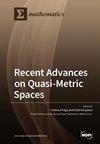一类新的减偏置广义希尔估计器
IF 2.2
3区 数学
Q1 MATHEMATICS
引用次数: 0
摘要
极值指数(EVI)的估计是极值统计领域的一项重要任务,因为它能为了解分布的尾部行为提供有价值的信息。对于帕累托类型的尾部模型,希尔估计器是一种常用的选择。然而,这种估计器容易出现偏差,导致对经济脆弱性指数的估计不准确,影响风险评估和决策过程的可靠性。本文介绍了一种新颖的减少偏差的广义希尔估计器,旨在通过减少偏差来提高经济脆弱性指数估计的准确性。本文章由计算机程序翻译,如有差异,请以英文原文为准。
A New Class of Reduced-Bias Generalized Hill Estimators
The estimation of the extreme value index (EVI) is a crucial task in the field of statistics of extremes, as it provides valuable insights into the tail behavior of a distribution. For models with a Pareto-type tail, the Hill estimator is a popular choice. However, this estimator is susceptible to bias, which can lead to inaccurate estimations of the EVI, impacting the reliability of risk assessments and decision-making processes. This paper introduces a novel reduced-bias generalized Hill estimator, which aims to enhance the accuracy of EVI estimation by mitigating the bias.
求助全文
通过发布文献求助,成功后即可免费获取论文全文。
去求助
来源期刊

Mathematics
Mathematics-General Mathematics
CiteScore
4.00
自引率
16.70%
发文量
4032
审稿时长
21.9 days
期刊介绍:
Mathematics (ISSN 2227-7390) is an international, open access journal which provides an advanced forum for studies related to mathematical sciences. It devotes exclusively to the publication of high-quality reviews, regular research papers and short communications in all areas of pure and applied mathematics. Mathematics also publishes timely and thorough survey articles on current trends, new theoretical techniques, novel ideas and new mathematical tools in different branches of mathematics.
 求助内容:
求助内容: 应助结果提醒方式:
应助结果提醒方式:


